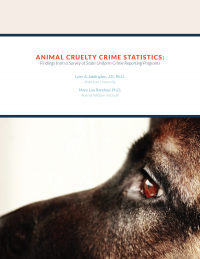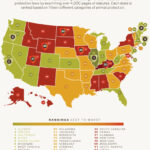Animal cruelty is a term that evokes an emotional response. The brutal treatment of animals encompasses various forms and can be manifested in numerous ways. While the moral outrage against such acts is rampant, the legal framework surrounding animal cruelty varies significantly across jurisdictions, leading to confusion about whether it is primarily a federal or state crime.
To unpack the complexities of animal cruelty laws in the United States, it is essential first to understand the distinction between federal and state jurisdiction. Federal law is constructed by the national government and applies uniformly across the country. Conversely, state laws are enacted by individual state legislatures and can vary widely from one jurisdiction to another.
At the federal level, animal cruelty is largely governed by the Animal Welfare Act (AWA). Enacted in 1966, the AWA regulates the treatment of animals in research, exhibition, transport, and by dealers. Although it sets forth specific regulations regarding the welfare of animals, it does not encompass all forms of animal cruelty. For instance, the AWA does not address the treatment of animals kept as pets or those not bred for commercial purposes. As such, the federal statute primarily imposes restrictions on the treatment of certain species such as dogs, cats, and certain other mammals, but it does not extend its jurisdiction to encompass broader definitions of animal cruelty.
Furthermore, the AWA has been criticized for its limitations, which often necessitate the intervention of state laws to fill the gaps. In 2019, the Preventing Animal Cruelty and Torture (PACT) Act was passed, creating a federal prohibition on certain forms of animal cruelty, such as crushing, burning, and drowning, among others. However, these federal statutes serve as a supplement rather than a substitute for state laws, which remain the predominant framework for prosecuting animal cruelty offenses.
On the state level, each state has its own set of laws that define and regulate animal cruelty. These laws can differ dramatically. Some states categorize animal cruelty as a felony, while others may classify it as a misdemeanor. In severe cases, states may impose stringent penalties that include imprisonment, hefty fines, and bans on future pet ownership. For example, states like California have comprehensive laws that not only address neglect and abuse but also encompass additional animal welfare regulations. In contrast, other states may have minimal regulations, leading to a patchwork of legal protections for animals across the United States.
The differentiation in state laws extends beyond merely categorizing the severity of offenses. Various states employ contrasting standards to determine what constitutes cruelty. Some states may label acts of negligence or deprivation of basic needs, such as food, water, and shelter, as cruel treatment. Others might only consider malicious acts—those committed with intent to harm—as cruelty. This variation complicates both the prosecution of offenders and the enforcement of animal protection laws.
Within the realm of enforcement, the jurisdiction of state laws means that the responsibility for investigating and prosecuting animal cruelty falls primarily on local authorities. Consequently, the efficacy of these laws can be hampered by resources and training. Animal control agencies are often underfunded and may lack the manpower or expertise needed to investigate incidents thoroughly. Additionally, public awareness and societal attitudes toward animals can influence how cases are handled. In communities where animal welfare is prioritized, there may be greater support for legislation and enforcement; conversely, in areas with less regard for animal rights, enforcement may be lax.
In the digital age, the exposure of animal cruelty through various media channels has prompted a societal response that increasingly recognizes the importance of protecting animal welfare. Advocacy efforts have burgeoned, with organizations working to strengthen animal cruelty laws at both state and federal levels. These groups often engage in campaigns aimed at educating the public and mobilizing support for legislative changes. By bringing attention to the plight of animals and the inadequacies of current regulations, activists seek to bridge the legislative gaps that exist between state and federal law.
In conclusion, determining whether animal cruelty is a federal or state crime reveals a nuanced legal landscape. While certain federal statutes exist that address specific forms of cruelty, the overwhelming majority of laws governing animal cruelty are state-centric and vary widely from one state to another. This results in differing legal definitions, enforcement protocols, and penalties, contributing to the complexity of combating animal cruelty effectively. As societal awareness continues to grow, there is an imperative need to critically assess and improve existing laws, ensuring they offer substantive protections for animals and address the multifaceted nature of cruelty, irrespective of jurisdiction.
For individuals committed to advocating for animal rights, understanding the legal framework surrounding animal cruelty is paramount. Knowledge of local and state laws, coupled with federal regulations, forms the foundation of effective activism and education. Through concerted efforts at both the grassroots and legislative levels, there is hope for fostering a society that respects and protects its animals, making cruelty a relic of the past.








